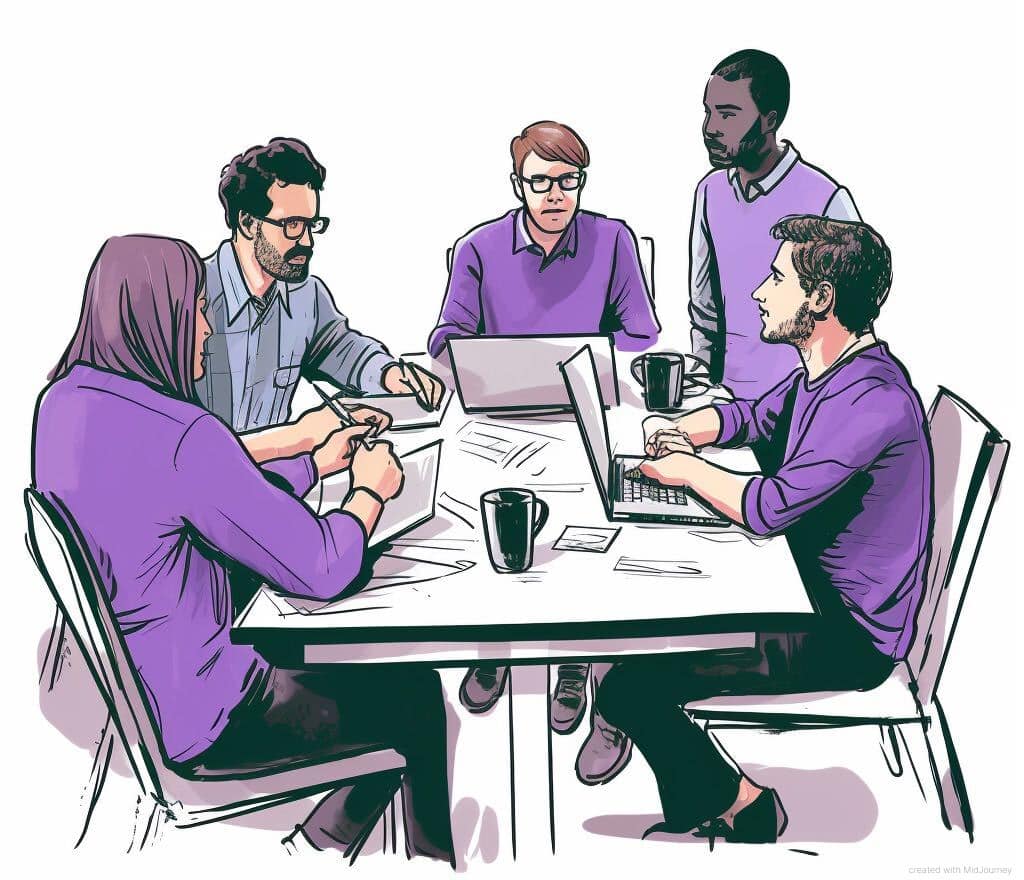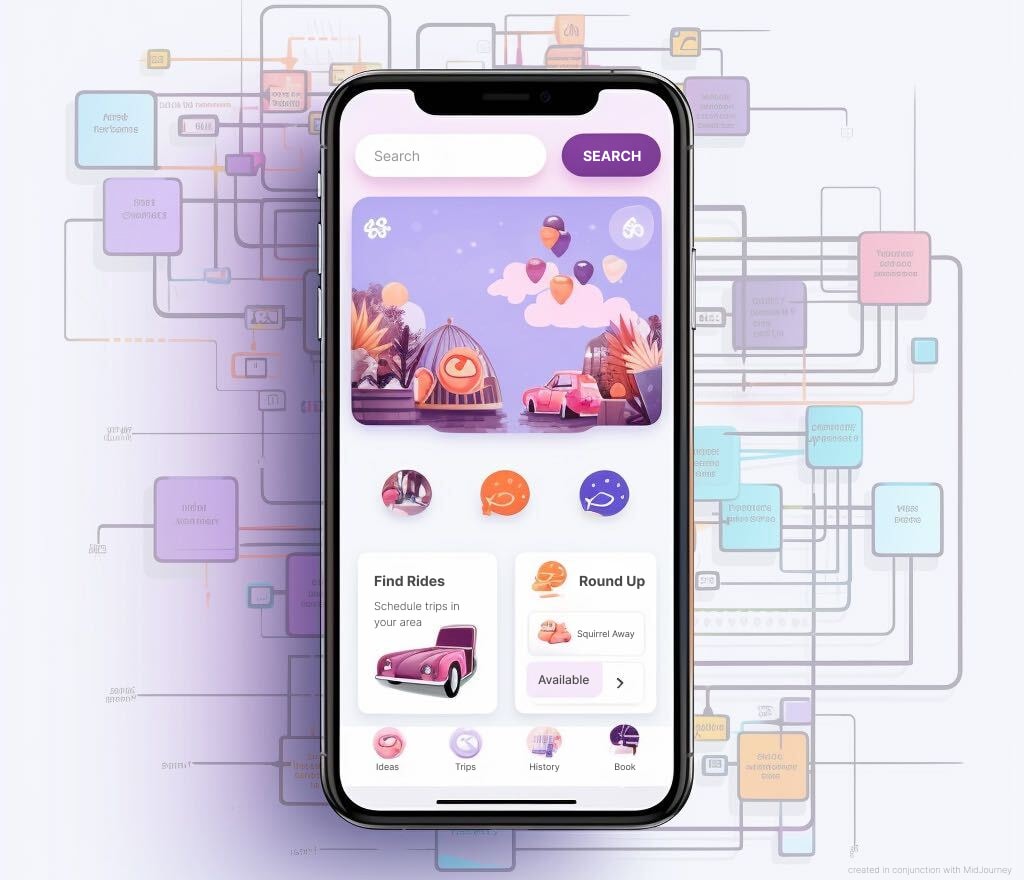
Starting your project with a UX Designer will result in a lowered cost of development by reducing unknowns; roadmaps for clarity, communication, and direction; timelines to keep pace, avoid scope-creep, and capture features; clearly defined requirements and user stories to create epics and issues from; and increased potential for user adoption of your product at launch.
Understanding “UX Design”
“UX” is shorthand for “User Experience.” The term and title “Design” is used in the same way an Architect designs buildings. While the final outcome is aesthetic, the form and function are what define a structure. Combined, “UX Design” is really just another way to say “creative problem-solving.” UX Design is the process of researching and defining what a product will be based on the needs of a user and the wants of a stakeholder.
What Is a “UX Designer”?
A “UX Designer” will follow a process to help define the concept of the product inside and out, understand the user base for the product, and meet with primary and secondary users of the product to get their feedback on how to make a good experience for them. This information will be translated into documented, justified reasons for product requirements and user stories called ‘design decisions’.
A UX Designer will justify the why and where around how each feature works and where it will fit into the product layout in order to satisfy the needs of the user and purpose provided by the stakeholder. Their main goal is to create a successful product by satisfying the needs of the client and creating a positive experience for the user. All of these details will be vetted with stakeholders, developers, and others associated with the project to ensure that all requirements are satisfied, that everything can be built in the time allowed for launch.
“Time spent creating and iterating user flows, wireframes, prototypes, UI mockups, and design systems can bring potential design and interaction issues to light before a single line of code is written.”
The UX “Process” – 3 Things
1. Simplicity Isn’t Simple
“Simplicity” is commonly misunderstood. The misconception is that if something is simple to use, it must have been simple to create. To create something simple or easy to use, extra work has been put in before the user interacts with the interface to refine functionality and clarify signals to make the final result a better experience. When users ask for “simplicity,” they are typically asking for “increased capability” and “increased usability”.

Making something “easy to use” is a creative problem to solve for every product. To really understand the needs of the user for any specific product, it is beneficial for your UX Designer to perform research including sitting with the intended user of the system and to interview and observe them about their pain points, requirements, frustrations, wants, and needs.
2. Discovery
A UX Designer’s engagement on a project typically starts as a Discovery phase. This is where they will define who your primary and secondary audiences are, and through lean research, begin to understand what features need to be included in the product from a 20,000-foot view.
It is this high level understanding where some essential outputs happen. A UX Designer will start to define the scenario for and tasks that users will engage with the product. It is essential to define this and vet this with the stakeholder to align on what specifically the product will become.
We also get assets like journey maps or user flows, which help to tell a story visually of how a user or users will traverse the product. These deliverables will be reviewed and iterated with engineers to think about feasibility and ease of development. Other team members can add a “layer” to these flows – we can show how data will flow through a product as well as a user. This understanding leads to more clarity and works as a map to build features from reducing ambiguity for the entire team.
Features should be built in order of complexity and necessity. For example, your MVP (Minimum Viable Product) will need to include all of the features that will make for a functional and usable product that will delight and provide value to your users. We don’t want to forget ideas and features for later versions of a product. To retain this information, a project roadmap is created with the engineering team to plan what will come in later versions. Understanding when and the order that things need to be built will help your team, especially developers, build the product more efficiently, leaving space or building towards future goals early without causing a long, or a costly code refactor later.
“Understanding when and the order that things need to be built will help your team, especially developers, build the product more efficiently, leaving space or building towards future goals early without causing a long, or a costly code refactor later.”
3. Refinement
The phase after Discovery is Product Refinement. Usability testing will continue throughout this phase. Meeting with users, asking them to interact with the product in prototype form allows us to capture how real users will interact with and think about the product. The cost of building a prototype at this point is a few days’ effort. It is better to get feedback about usage and adoption now, allowing us to pivot or iterate on concepts before investing in several weeks or months of development.
This is also when the 20,000-foot view is refined into clearly defined user stories to be used for epics and issues in tracking and development. User stories help to communicate with the team the direction of what needs to be built, in what order, and how it might fit into other parts of the product.
The Value of a UX Designer
Working with a UX Designer will help to refine and align the product concept with stakeholders. Product alignment helps to clarify goals and focus the direction of the product, reducing the potential for scope creep and delays.
Having a UX Designer on your project means you have someone looking out for your users. Talking to users to find out what they need and testing concepts back to them helps to refine the purpose of a product and increases the chance for user adoption.
Projects that start with a UX Designer have a drastically reduced development time. Time spent creating and iterating user flows, wireframes, prototypes, UI mockups, and design systems can bring potential design and interaction issues to light before a single line of code is written. Developers can use user stories to create epics and issues to build from, user flows as project roadmaps, and leverage design systems and component documentation to build out a product with more efficiency.
Every project needs a UX Designer.
Loved the article? Hated it? Didn’t even read it?
We’d love to hear from you.





Really good blog.
I wonder why are people not commenting?